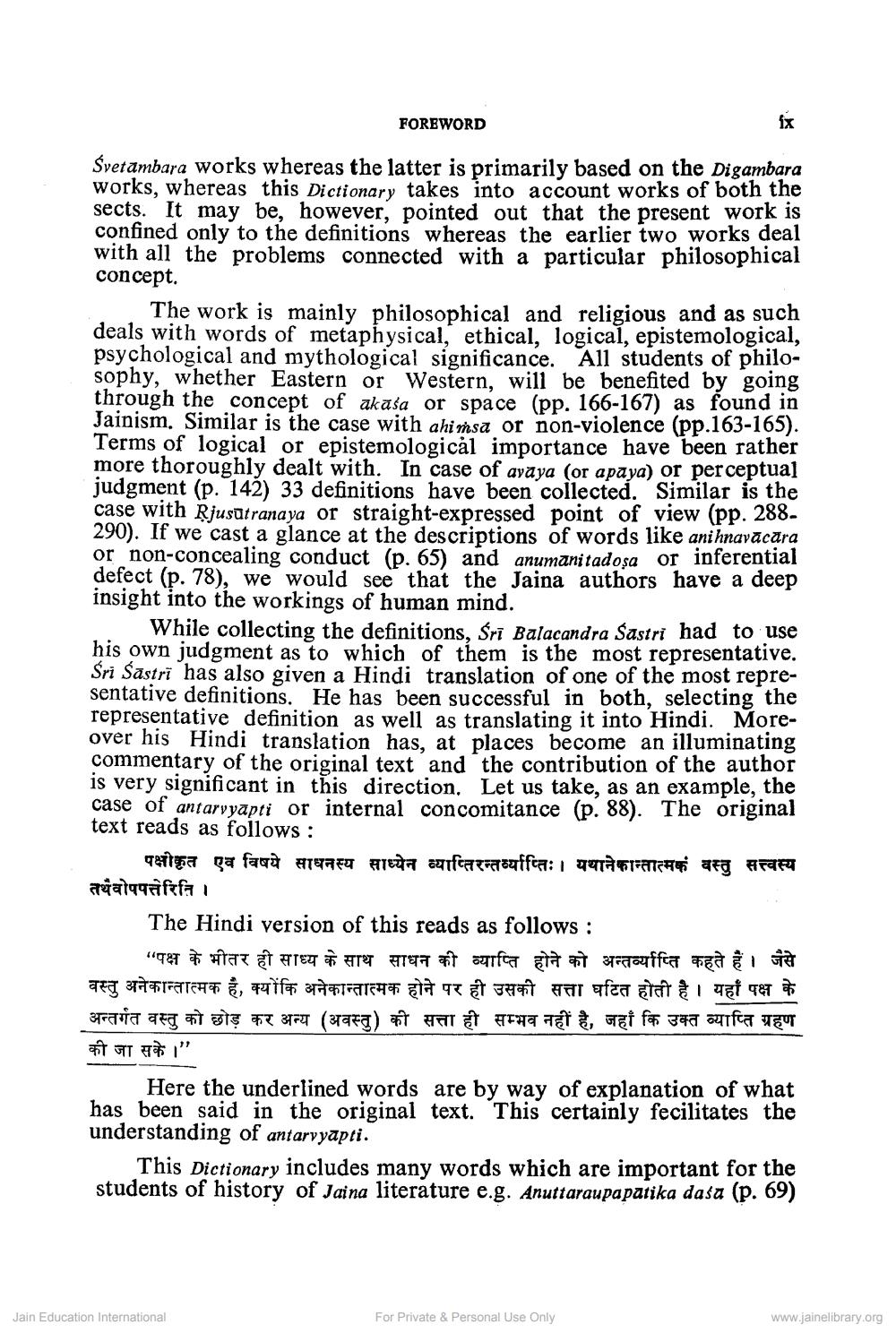________________
FOREWORD
Svetambara works whereas the latter is primarily based on the Digambara works, whereas this Dictionary takes into account works of both the sects. It may be, however, pointed out that the present work is confined only to the definitions whereas the earlier two works deal with all the problems connected with a particular philosophical concept.
_. The work is mainly philosophical and religious and as such deals with words of metaphysical, ethical, logical, epistemological, psychological and mythological significance. All students of philosophy, whether Eastern or Western, will be benefited by going through the concept of akaša or space (pp. 166-167) as found in Jainism. Similar is the case with ahimsa or non-violence (pp.163-165). Terms of logical or epistemological importance have been rather more thoroughly dealt with. In case of avaya (or apaya) or perceptual judgment (p. 142) 33 definitions have been collected. Similar is the case with Rjusutranaya or straight-expressed point of view (pp. 288290). If we cast a glance at the descriptions of words like anihnavācāra or non-concealing conduct (p. 65) and anumanitadosa or inferential defect (p. 78), we would see that the Jaina authors have a deep insight into the workings of human mind.
While collecting the definitions. Śrī Balacandra Sastri had to use his own judgment as to which of them is the most representative. Sri Sastri has also given a Hindi translation of one of the most representative definitions. He has been successful in both, selecting the representative definition as well as translating it into Hindi. Moreover his Hindi translation has, at places become an illuminating commentary of the original text and the contribution of the author is very significant in this direction. Let us take, as an example, the case of antarvyāpti or internal concomitance (p. 88). The original text reads as follows:
पक्षीकृत एव विषये साधनस्य साध्येन व्याप्तिरन्ताप्तिः। यथानेकान्तात्मकं वस्तु सत्त्वस्य तथैवोपपत्तेरिति ।
The Hindi version of this reads as follows :
"पक्ष के भीतर ही साध्य के साथ साधन की व्याप्ति होने को अन्तर्व्याप्ति कहते हैं। जैसे वस्तु अनेकान्तात्मक है, क्योंकि अनेकान्तात्मक होने पर ही उसकी सत्ता घटित होती है । यहाँ पक्ष के अन्तर्गत वस्तु को छोड़ कर अन्य (अवस्तु) की सत्ता ही सम्भव नहीं है, जहाँ कि उक्त व्याप्ति ग्रहण at JT TE."
Here the underlined words are by way of explanation of what has been said in the original text. This certainly fecilitates the understanding of antarvyāpti.
This Dictionary includes many words which are important for the students of history of Jaina literature e.g. Anuttaraupapatika daśa (p. 69)
Jain Education International
For Private & Personal Use Only
www.jainelibrary.org




